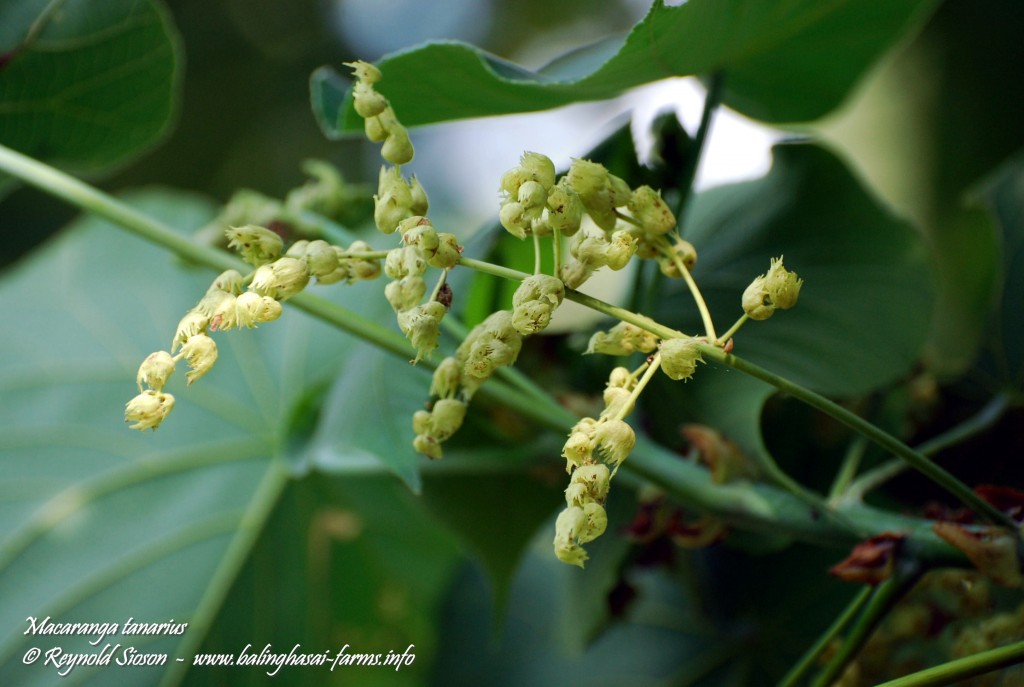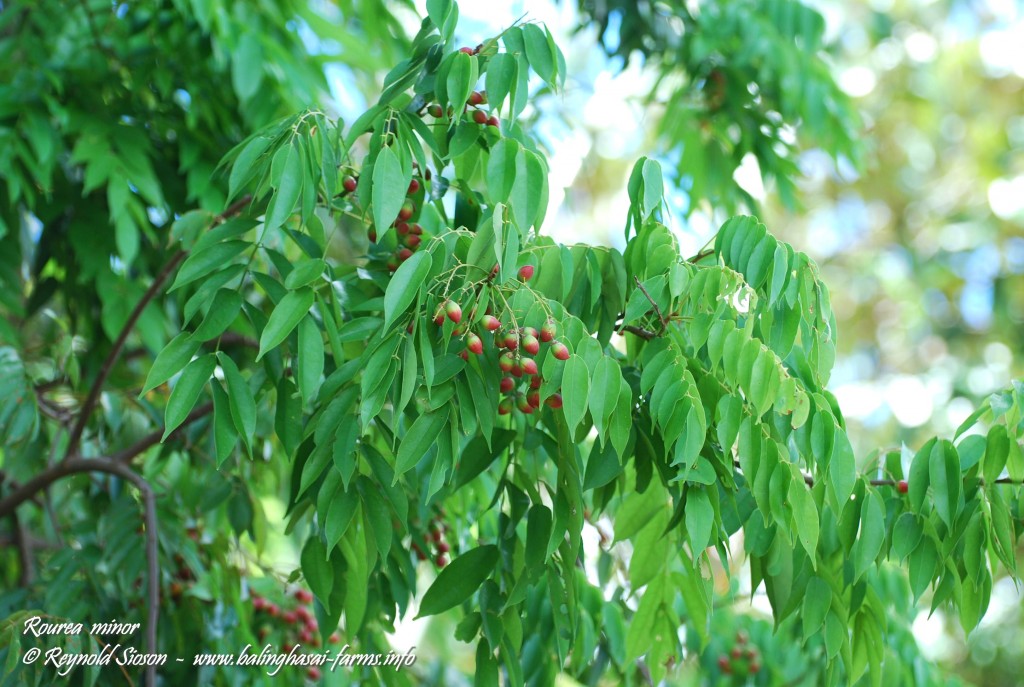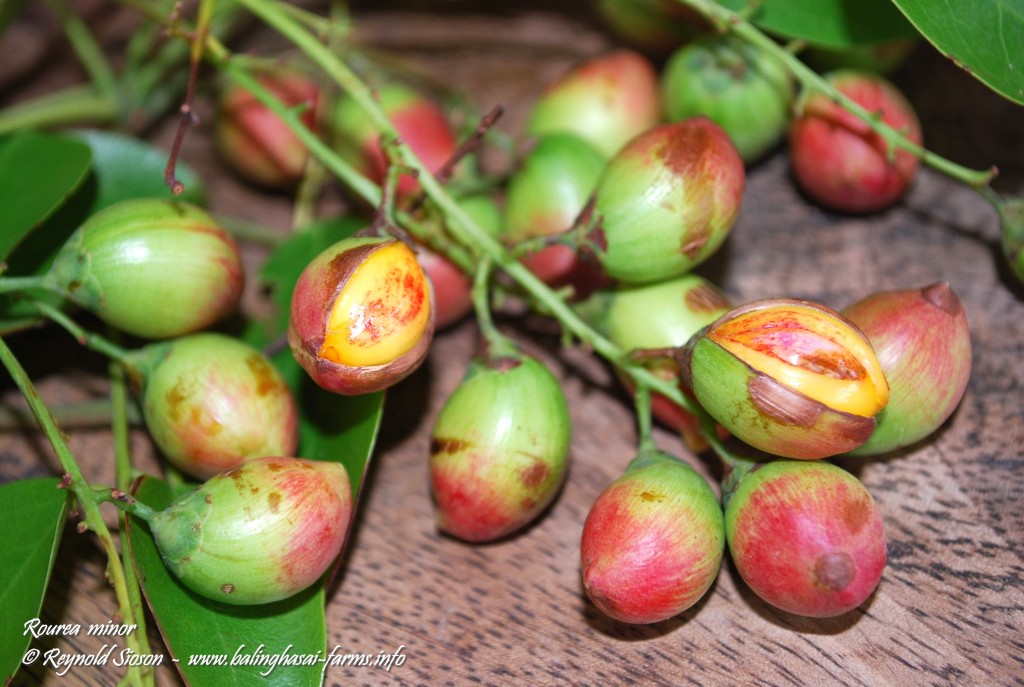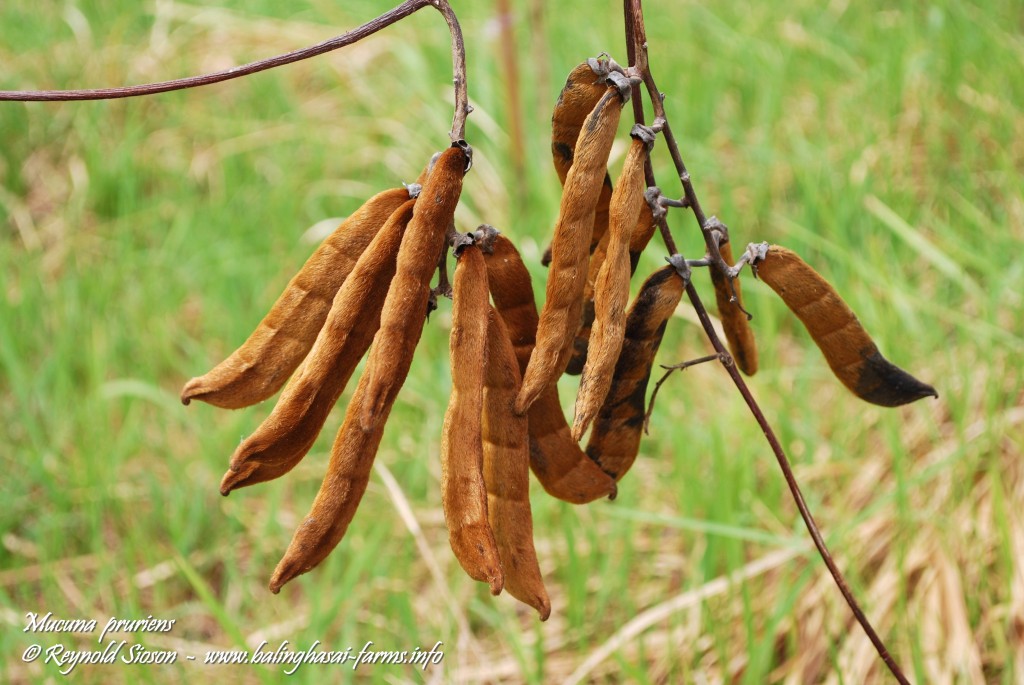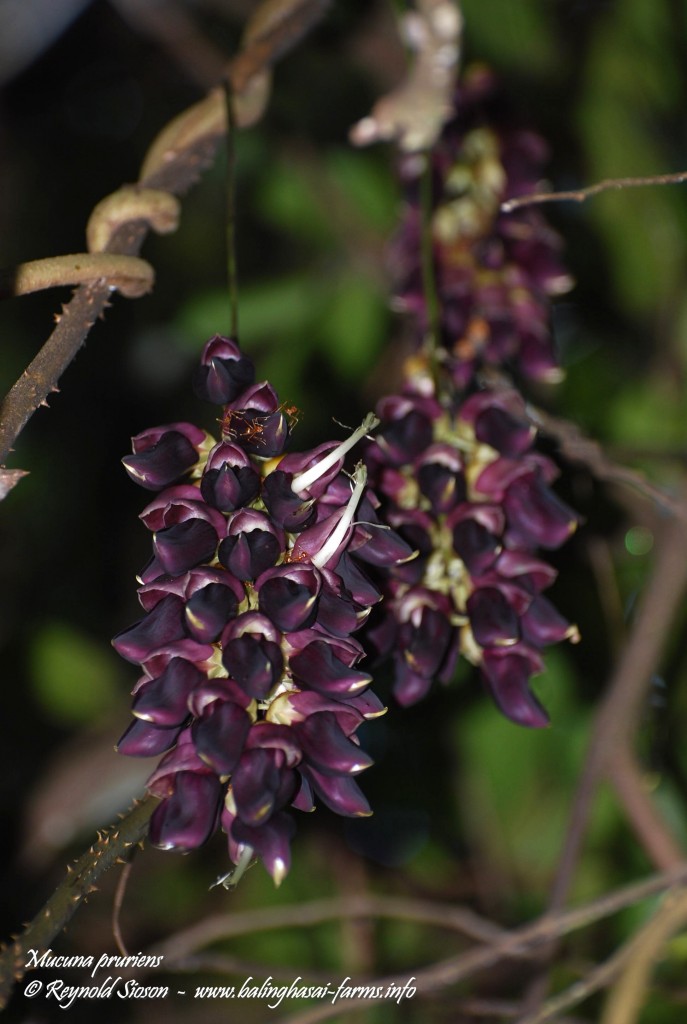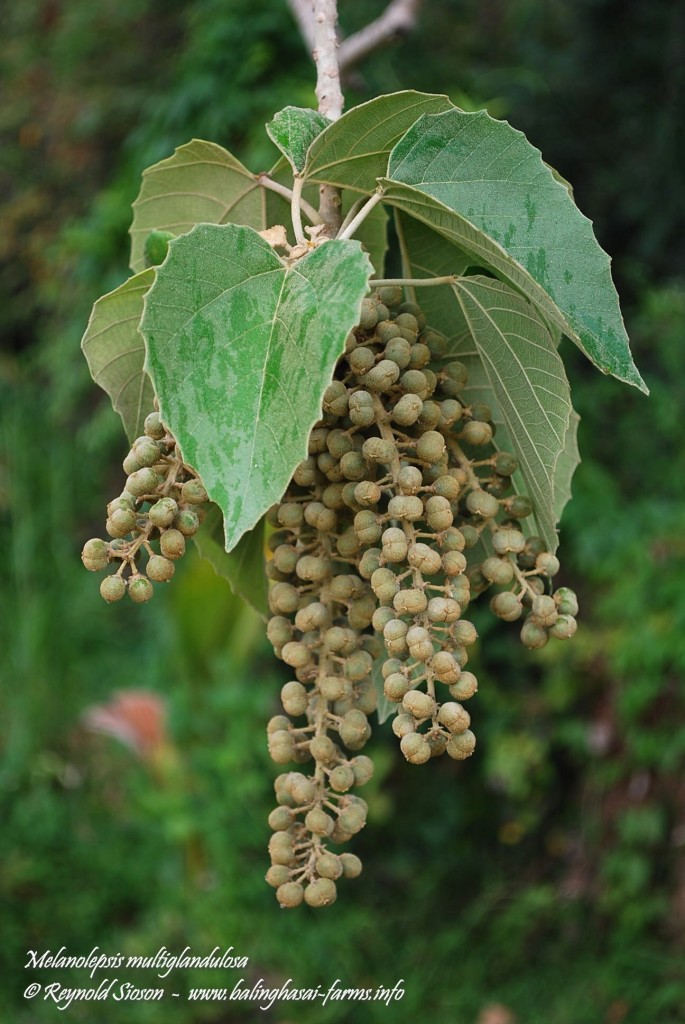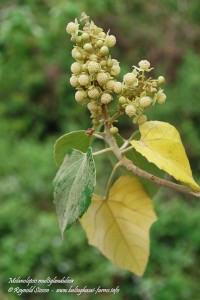Photo specimen : Wild trees
Specimen height : 4-6 meters
Habitats : Coastal thickets, creekbanks, grasslands, roadsides, wastelands
Local name : Binunga
Botanical name : Macaranga tanarius
Family : Euphorbiaceae
Fruiting season : December to January
Traits : Drought tolerant; Fast-growing; Low to medium altitude tree; Semi-decidious; Shade tolerant; Small tree; Tolerant of infertile soil
Recommendations : Coastal protection; Cut and carry fodder; Erosion control; Fallow improvement; Farms; Green manure; Home gardens; Landscaping; Living fence; Living trellis; Nurse tree; Ornamental tree; Paper & pulp tree plantations; Pioneer species for reforetation purposes; Public spaces; Riparian management; Roadside tree; Shade tree; Urban greening; Wildcrafting
Used for : Fruits added to palm juice to improve the quality of sugar produced; Bark and leaves are used locally in the preparation of Basi wine; Resin or gum from the bark is used as glue in making musical instruments; Black dye is obtained from the leaves; Tanin from the bark is used to toughen fishnets from seawater exposure; Leaves as cattle fodder; Pulpwood; Firewood and charcoal
Native range : India, East Asia, Southeast Asia (including the Philippines) to Australia
National conservation status : Not threatened
Further reading :
Revised Lexicon of Philippine Trees (J. Rojo)
Tropical & Subtropical Trees (M. Barwick)
World Agroforestry http://www.worldagroforestry.org/af/treedb/AFTPDFS/Macaranga_tanarius.pdf (900)

